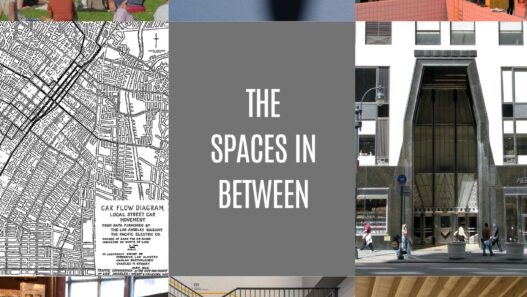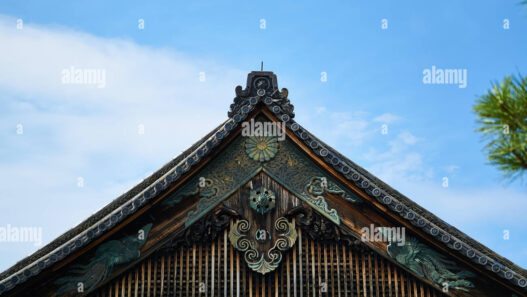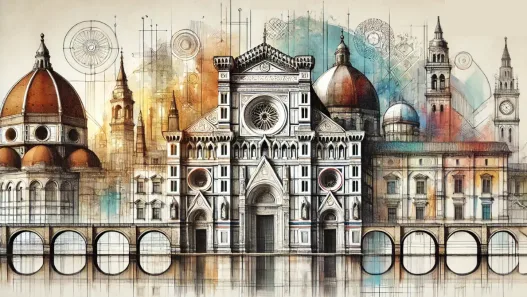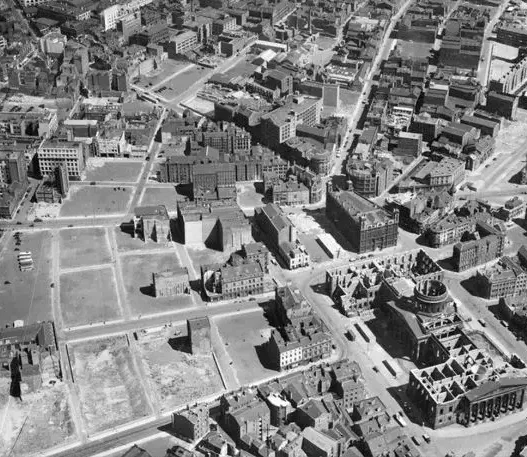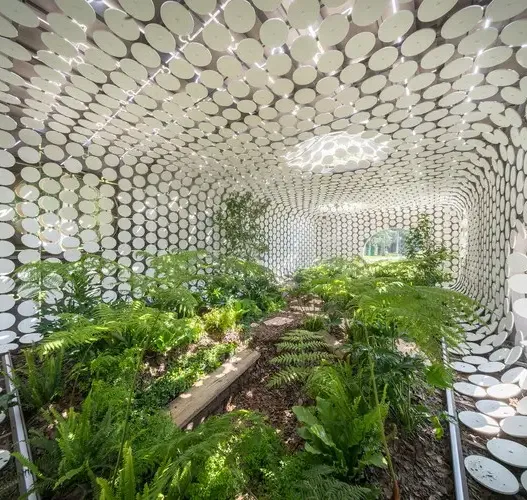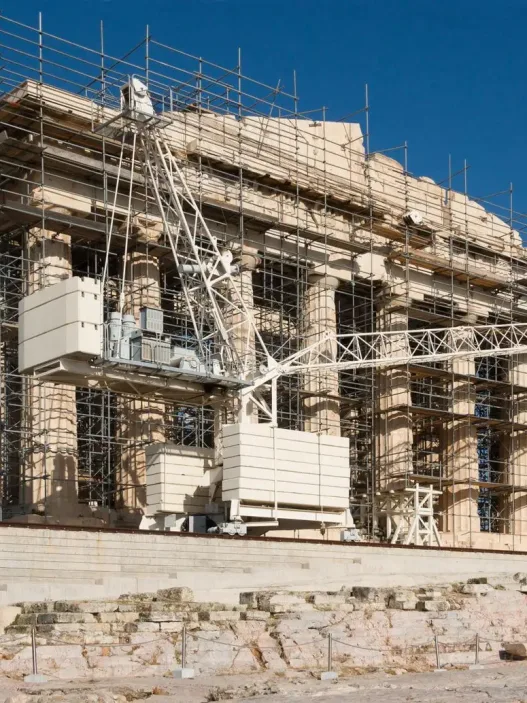Renaissance architecture marks an important moment in the history of design, embodying a unique blend of innovation and tradition. Emerging in the 14th century and flourishing throughout the 17th century, the movement sought to revitalize the classical ideals of ancient Rome and Greece while embracing new ideas and techniques. As architects began to explore humanism, symmetry, proportion and perspective, they produced buildings that resonated with beauty and functionality. This period not only changed the face of Europe, but also set the stage for the practice of modern architecture.

Historical Context
The Renaissance was born in Italy, where vibrant cities such as Florence, Venice and Rome were at the forefront of a cultural rebirth. This period followed the Middle Ages, which focused on religious themes and Gothic design. As scholars rediscovered classical texts, a new appreciation for art, science and the human experience emerged. Architects sought to reflect this renewed spirit with innovative designs that celebrated human achievement and intellect. The historical context of the Renaissance is marked by key events such as the rise of wealthy patrons such as the Medici family, who financed ambitious projects that showcased the artistic and architectural advances of the period.
Key Features
Renaissance architecture is characterized by its emphasis on symmetry, proportion and geometry. In contrast to the verticality of Gothic buildings, Renaissance buildings often featured horizontal lines and balanced proportions, creating a sense of harmony. The use of columns, domes and arches, echoing the designs of classical antiquity, became common. Architects also employed new techniques in painting and spatial planning, such as perspective, which increased the visual depth of buildings. While architects designed spaces that stimulated the senses and invited contemplation, careful consideration of light and shadow also played an important role.
Influence of Classical Architecture
The revival of classical architecture was one of the cornerstones of the Renaissance. Architects studied the remains of ancient Roman buildings and tried to imitate their splendor. Vitruvius was a Roman architect whose principles of beauty, utility and durability were an important guiding influence on Renaissance designers. Buildings such as the Tempietto in Rome exemplify this respect for classical forms with their harmonious proportions and attention to detail. The use of domes, as seen in St. Peter’s Basilica, not only paid homage to Roman engineering, but also inspired future generations by pushing the boundaries of what was architecturally possible.
The Role of Humanism
Humanism played a transformative role in Renaissance architecture, shifting the focus from the divine to the human experience. By emphasizing the value of individuality and the study of classical texts, this philosophical movement inspired architects to create spaces that reflected human dignity and intellect. Buildings became symbols of civic pride and cultural achievement. The Palazzo della Cancelleria in Rome, for example, highlights the connection between architecture and human experience, demonstrating the integration of classical elements with functional urban design. This shift enabled architects to envision spaces not just as shelter, but as environments that foster community and interaction.
From Gothic to Renaissance
The transition from Gothic to Renaissance architecture was gradual but profound. While Gothic cathedrals emphasized height and light through intricate stained glass, Renaissance architects sought to ground their designs in symmetry and classical proportions. This evolution reflected broader changes in social values, moving away from the medieval focus on the divine and towards a celebration of human achievement. Originally built in the Gothic style, Florence Cathedral underwent transformations that embraced Renaissance ideals, culminating in the iconic dome designed by Filippo Brunelleschi. This shift not only redefined architectural aesthetics, but also set the stage for future architectural movements by blending the legacies of both eras into a coherent narrative of human creativity.
In sum, Renaissance architecture represents a remarkable journey of reinvention and innovation in which old principles were revitalized and adapted to meet the demands of a new age. The architects of this period not only shaped the skyline of their time, but also laid the foundation for architectural wonders that continue to inspire us today.
The Renaissance is a period of profound transformation in art, culture and architecture, roughly from the 14th to the 17th century. It marked a revival of classical learning and wisdom that led to innovative architectural techniques that balanced traditional forms with new ideas. At the center of this movement were several important architects whose work not only shaped the cities of their time, but also laid the foundations for modern architecture.
Leading Renaissance Architects
Filippo Brunelleschi
Filippo Brunelleschi is often referred to as the father of Renaissance architecture. His most important achievement is the dome of Florence Cathedral, known as Santa Maria del Fiore. Before Brunelleschi, it seemed impossible to build such a large dome. Brunelleschi ingeniously designed a double shell for the dome, providing greater stability while reducing weight. This innovative approach not only demonstrated his mastery of geometry and engineering, but also revitalized the use of classical elements such as arches and columns.
Brunelleschi’s techniques, including the use of perspective, changed how space is understood in architecture. His work laid the foundation for future architects, blending technical skill with a deep appreciation for the aesthetic qualities of buildings. His influence can be seen in countless buildings in Italy and beyond, making him an important figure in the architectural revolution of the Renaissance.
Leon Battista Alberti
Leon Battista Alberti was not just an architect; he was a true polymath who excelled in various fields such as painting, poetry and philosophy. His approach to architecture was highly theoretical and based on the belief that buildings should reflect the harmony and proportion found in nature. Alberti’s treatise *De re aedificatoria* is considered one of the first comprehensive works on architecture, outlining principles emphasizing symmetry, the use of classical orders and the importance of context in design.
One of his most notable projects is the facade of Santa Maria Novella in Florence. Here, he skillfully combined elements of classical architecture with a modern sensibility to create a harmonious and visually striking entrance. Alberti’s work exemplifies the Renaissance commitment to blending art and science, and his ideas continue to influence architects today.
Michelangelo Buonarroti
Michelangelo Buonarroti is often remembered for his extraordinary contributions to sculpture and painting, but his architectural work is equally important. His work on St. Peter’s Basilica in the Vatican reveals his innovative spirit and deep understanding of form and structure. Michelangelo took on the task of completing the basilica after the death of the original architect, Bramante, and brought a sense of grandeur and monumentality that marked Renaissance architecture.
His daring use of space and light in the basilica, especially in the design of the dome, shows a masterful blending of classical principles with bold new ideas. Michelangelo’s architectural style emphasizes expressive forms and dramatic proportions that continue to amaze visitors today. His ability to combine artistic vision with architectural function redefined the possibilities of what buildings could represent.
Andrea Palladio
Andrea Palladio is generally considered one of the most influential architects in Western history. His work is characterized by a return to classical antiquity, emphasizing balance, harmony and symmetry. Palladio’s treatise *I Quattro Libri dell’Architettura* (The Four Books of Architecture) laid down design principles that would influence generations of architects, especially in England and America.
Palladio’s villas, such as Villa Rotonda in the Veneto region of Italy, are excellent examples of his architectural philosophy. Not only do they reflect classical ideals, but they also blend seamlessly into their landscape. Palladio’s designs emphasized the relationship between the building and its surroundings, a concept that remains important in contemporary architecture. Palladio’s legacy is evident in neoclassical architecture, where his principles continue to resonate.
Francesco Borromini
Francesco Borromini was a revolutionary figure in Baroque architecture, known for his dynamic forms and complex designs that broke with the rigid symmetry of earlier styles. His most famous work, the San Carlo alle Quattro Fontane in Rome, showcases his unique approach to space and structure. Borromini’s use of curves, light and shadow creates a sense of movement and fluidity that mesmerizes viewers.
His ability to manipulate traditional elements such as domes and facades allows for unexpected visual experiences. Borromini’s work represents a shift towards the emotional and expressive potential of architecture, making it a powerful tool for conveying ideas and emotions. Borromini’s innovative techniques and bold designs paved the way for future architectural movements by emphasizing the importance of creativity and individual expression in the built environment.
In conclusion, the aforementioned Renaissance architects not only transformed the architectural landscape of their time, but also established principles and techniques that continue to influence architecture today. Their ability to balance tradition and innovation has created a rich legacy that invites constant discovery and appreciation. As we walk through cities adorned with their masterpieces, we remember the timelessness of their contributions to the world of architecture.
The Renaissance was an extraordinary period that marked a transformative change in art, culture and architecture. Originating in Italy in the 14th century, it heralded the rebirth of classical ideas, blending them with innovative techniques and materials. The architects of this period were not only builders but also thinkers who sought to harmonize tradition with new visions. His groundbreaking ideas laid the foundation for modern architecture and influenced countless generations to come.
Innovative Techniques and Materials
During the Renaissance, architects pushed the boundaries of what was possible in construction by discovering a variety of innovative techniques and materials. These developments not only increased aesthetic appeal, but also improved functionality, allowing buildings to reach unprecedented heights and complexity.
Use of Perspective
One of the most revolutionary techniques developed during the Renaissance was the use of perspective. This was not only a method of creating the illusion of depth in paintings, but also a critical approach to architectural design. Architects such as Filippo Brunelleschi played a crucial role in formalizing linear perspective, which allowed for an accurate representation of space. By using vanishing points and horizon lines, architects were able to design buildings that looked more dynamic and interesting. This technique made structures appear more realistic and visually appealing, inviting viewers to experience a sense of depth and dimensionality that was largely absent in earlier architectural styles.
Advances in Structural Engineering
The Renaissance was a period of significant advances in structural engineering that allowed architects to experiment with new forms and materials. The introduction of reinforced arches and vaults, together with the increased use of stone and brick, allowed for the construction of larger and more complex buildings. The famous dome of Florence Cathedral, designed by Brunelleschi, exemplifies this innovation. His use of a double-shell structure not only provided stability but also reduced the weight of the dome, allowing it to span a large area without the need for intrusive supports. This breakthrough in engineering principles set the stage for future architectural marvels.
Application of Geometry
Geometry was a fundamental aspect of Renaissance architecture, influencing design principles and structural integrity. Architects such as Leon Battista Alberti, inspired by ancient Roman and Greek architecture, emphasized proportionality and symmetry. They understood that the harmonious use of geometric shapes could create aesthetically pleasing environments. Buildings were meticulously planned with a focus on balance, resulting in structures that not only serve functional purposes but also embody beauty. For example, the facade of Santa Maria Novella in Florence shows how geometric forms can create rhythm and harmony, enriching the overall experience of the space.
Innovations in Dome Construction
Dome construction reached new heights during the Renaissance, especially through the work of architects such as Brunelleschi and Michelangelo. Innovative techniques in dome construction, including the use of the herringbone brick pattern and the development of the wooden centering system, allowed the creation of domes that were larger and more complex than ever before. The dome of St. Peter’s Basilica in Rome stands as a testament to this innovation, featuring a grand design that combines both engineering skill and artistic vision. The ability to create such monumental structures not only transformed skyscrapers, but also represented the aspirations of a society eager to express its newfound self-confidence and creativity.
Integration of Light and Space
Renaissance architects understood the profound impact of light on architectural space. They sought to create environments where light played a crucial role in enhancing the experience of a building. Large windows, complex glazing designs and strategic placement of openings allow natural light to flood the interior spaces, creating a sense of openness and connection to the outside world. The use of skylights in cathedrals and public buildings exemplifies this integration, allowing light to illuminate works of art and architectural details while contributing to the spiritual atmosphere of the space. This thoughtful use of light not only emphasized the beauty of the architecture, but also invited reflection and contemplation.
As a result, the innovative techniques and materials used by Renaissance architects were instrumental in shaping the architectural landscape of their time. Their ability to blend traditional elements with the latest developments led to the creation of structures that were not only functional but also profoundly beautiful. This period set the stage for the evolution of architecture and left a legacy that continues to inspire architects and designers around the world today.
The Renaissance was a remarkable period in European history characterized by a revival of classical learning and wisdom. It not only transformed art and literature, but also led to revolutionary changes in architecture. Renaissance architects sought to harmonize classical design principles with innovative techniques, resulting in buildings that exemplify beauty, symmetry and functionality. This survey of the major works of Renaissance architecture reveals the delicate balance between tradition and innovation, emphasizing how these architectural achievements reflect the spirit of their time.
Major Works of Renaissance Architecture
Florence Cathedral
Florence Cathedral, officially known as Santa Maria del Fiore, is a monumental testament to Renaissance architecture. Begun and completed in the 15th century, the cathedral is famous for its magnificent dome designed by Filippo Brunelleschi. An engineering marvel, the dome was the largest in the world at the time and remains a symbol of Florence. Brunelleschi’s innovative use of double-shell construction not only increased the stability of the dome, but also allowed it to reach its impressive height without the need for extensive scaffolding. The cathedral’s façade, decorated with intricate sculptures and vibrant marble patterns, reflects the Renaissance emphasis on harmony and beauty. The interplay of light and shadow on the dome’s surface adds to the cathedral’s charm and invites observers to appreciate its splendor from every angle. Florence Cathedral is not only a religious building; it represents the spirit of humanism that flourished during the Renaissance and bridges the gap between the sacred and the secular.
St. Peter’s Basilica
St. Peter’s Basilica in Vatican City is perhaps the most iconic example of Renaissance architecture. Commissioned by Pope Julius II in the early 16th century, its construction brought together some of the greatest minds of the era, including Michelangelo, who designed the dome. The basilica’s vast interior serves as a visual narrative of the power and influence of the Catholic Church, with its lavish decorations and stunning artwork. Michelangelo’s dome, inspired by the Pantheon, is an engineering marvel that dominates the skyline and symbolizes the connection between heaven and earth. The use of classical elements such as columns, pilasters and a grand facade demonstrates the Renaissance architects’ respect for ancient Roman architecture, while incorporating innovative techniques that enhance the spatial experience of the building. St. Peter’s Basilica is a place of pilgrimage that not only attracts millions of visitors, but also represents the lasting legacy of Renaissance thought in modern architecture.
Palazzo Rucellai
Designed by Leon Battista Alberti in the 15th century, Palazzo Rucellai exemplifies the principles of Renaissance architecture with its harmonious proportions and elegant facade. Located in Florence, this palazzo features a striking façade that utilizes a tripartite design reflecting classical architectural orders. The use of pilasters and cornice creates a sense of verticality and grandeur, while the harmonious arrangement of windows enhances the overall aesthetic. Alberti’s design philosophy, inspired by ancient Roman architecture, emphasized the importance of proportion and symmetry. Palazzo Rucellai served not only as a private residence, but also as an expression of the wealth and status of the Rucellai family. Its design paved the way for future palace architecture in Florence, showing how Renaissance architects balanced tradition with innovative ideas to create structures that were both functional and beautiful.
Villa Rotonda
Designed by Andrea Palladio in the late 16th century, Villa Rotonda is an excellent example of Renaissance villa architecture. Located near Vicenza, Italy, this villa is famous for its harmonious proportions and classical elements. The circular plan of the building, combined with a domed roof and porticos on either side, creates a symmetrical and balanced appearance. Palladio’s use of classical motifs, such as Corinthian columns and pediments, reflects the influence of ancient Roman temples. Villa Rotonda was designed as a retreat for the wealthy and offers spectacular views of the surrounding landscape. Its innovative layout and integration with nature exemplifies the Renaissance ideal of blending architecture with the environment. Today, Villa Rotonda remains an influential model for country houses and has inspired countless architects worldwide, demonstrating the lasting impact of Palladio’s vision.
Church of San Carlo alle Quattro Fontane
Designed by Francesco Borromini, the Church of San Carlo alle Quattro Fontane is a striking example of Baroque architecture evolving from Renaissance principles. Completed in the mid-17th century, the church features a unique oval plan and a complex façade that showcases Borromini’s innovative approach to space and form. The interplay of light and shadow inside the church creates a dynamic atmosphere, drawing visitors into its spiritual embrace. Borromini’s use of undulating walls and sculptural elements reflects a departure from the strict symmetry of earlier Renaissance designs and embodies the evolving artistic expression of the time. The Church of San Carlo alle Quattro Fontane serves not only as a place of worship, but also as a testament to the creativity and ingenuity of the architects who built upon the foundations laid by their Renaissance predecessors. It highlights how the journey of architectural innovation continues to evolve, blending the past with the new.
Through these extraordinary works, the Renaissance period showcases a transformative era in architecture, when the combination of classical influences and innovative techniques led to structures that continue to inspire and fascinate. Each building tells a story of its time, reflecting the aspirations and achievements of the architects who dared to dream and create.
The Renaissance period marked a profound transformation in art, culture and architecture from the 14th to the 17th century. During this period, architects not only drew on the classical past, but also pushed boundaries, blending tradition with innovative techniques. As we explore the influence of Renaissance architecture, we uncover its lasting impact on future styles and the architectural landscape we see today.
The Impact of Renaissance Architecture on Future Styles
Renaissance architecture revolutionized the way buildings were designed and constructed, emphasizing a return to classical ideals and introducing new ideas that would shape subsequent architectural movements. The principles developed during this period, such as symmetry, proportion, the use of columns and domes, formed the basis of the various styles that followed. Renaissance architects blended artistic expression with scientific understanding, creating a legacy that reverberated through the centuries.
Transition to Baroque Architecture
As the Renaissance gave way to the Baroque, architecture underwent a dramatic transformation. Baroque architects adopted the Renaissance emphasis on grandeur and symmetry, but amplified these elements to create more dynamic and emotional spaces. Buildings became more theatrical, with bold curves, elaborate ornamentation and a sense of movement that engaged viewers on a sensory level. For example, St. Peter’s Basilica in the Vatican, originally designed by Renaissance architects such as Bramante and Michelangelo, was later complemented with Baroque elements emphasizing drama and opulence, showing how the basic principles of the Renaissance were transformed into a new, more expressive style.
Influence on Neoclassical Design
The neoclassical movement emerged in the 18th century as a direct response to the excesses of Baroque architecture. It sought to return to the clarity and simplicity that characterized the Renaissance and drew heavily on its principles. Architects such as Thomas Jefferson in the United States and Robert Adam in England were inspired by the symmetry and proportions of Renaissance designs and used them to create structures that reflected the ideals of democracy and reason. Jefferson’s Monticello and the Virginia State Capitol reflect this revival by combining Renaissance harmony with classical references, thus emphasizing the lasting influence of Renaissance thought on later architecture.
Heritage in Modern Architecture
The legacy of Renaissance architecture is reflected in modern architectural practice. The emphasis on function, aesthetics and human experience can be traced back to Renaissance ideals. Today, architects continue to explore the balance between form and function, often integrating modern materials and technologies while respecting classical design principles. The work of contemporary architects such as Richard Meier and Zaha Hadid showcases this dialog between past and present, demonstrating how Renaissance concepts remain relevant in creating spaces that are both innovative and timeless.
Conservation and Restoration Efforts
The importance of preserving Renaissance architecture cannot be overstated. Many iconic buildings from this period face challenges due to urban development, environmental factors and neglect. Conservation efforts aim to preserve the integrity of these structures so that future generations can appreciate their historical and cultural significance. Organizations and governments around the world are investing in restoration projects using traditional techniques and materials to stay true to the original designs. This commitment not only honors the artistic achievements of the Renaissance, but also educates the public about its architectural heritage.
Global Impact of Renaissance Principles
Renaissance architecture was not confined to Europe; its principles spread throughout the world, influencing various cultures and architectural styles. In regions such as Latin America, colonial architects adopted Renaissance elements in their churches and public buildings, blending them with local traditions. This fusion created unique styles that reflect a dialog between European and indigenous influences. Today, the global appreciation for Renaissance architecture fosters a shared sense of history and inspires architects and designers worldwide to explore and reinterpret these fundamental concepts in their own work.
As a result, the influence of Renaissance architecture extended far beyond its time, shaping future styles and enriching architectural discourse. With its revolutionary techniques, this period laid the foundation for a rich tapestry of design that continues to inspire and challenge architects today, reminding us of the natural relationship between tradition and innovation.
The Lasting Legacy of Renaissance Architects
The Renaissance period marked an important turning point in the history of architecture, characterized by an unprecedented combination of classical tradition and innovative techniques. Architects of this period, such as Filippo Brunelleschi and Andrea Palladio, not only revived ancient Roman principles, but also introduced groundbreaking methods that reshaped the built environment. Their legacy continues to influence contemporary architecture, making their contributions vital to understanding the evolution of design.
Reflecting on Innovation and Tradition
Renaissance architects were remarkable for their ability to combine innovation with tradition. They did not simply imitate the forms of the past; they analyzed them and adapted them to suit contemporary needs. Brunelleschi’s development of linear perspective, for example, transformed the way space is represented in architecture, creating more harmonious and realistic environments. This reflective practice of looking back while moving forward is characteristic of the Renaissance and emphasizes how past knowledge can be a springboard for future creativity.
Relevance in Today’s Architecture
The principles established by Renaissance architects are still valid today. Modern architects often draw on the symmetry, proportion and harmony that were rigorously explored during this period. Buildings such as the United States Capitol or the National Gallery of Art reflect the grandeur of Renaissance design and demonstrate how these principles can be adapted to contemporary contexts. Moreover, the emphasis on human scale and experience in architectural design resonates with today’s focus on creating spaces that foster community and well-being, showing how the past informs the present.
Lessons from Renaissance Techniques
One of the most important lessons of Renaissance architecture is the importance of innovation in design. Techniques such as the use of domes in St. Peter’s Basilica demonstrate not only artistic ambition but also engineering ingenuity. This mix of art and science is crucial for modern architects who have to grapple with new materials and technologies. The Renaissance also teaches the value of collaboration between artists, engineers and patrons, a practice that continues to flourish in today’s multidisciplinary design teams.
Future Directions in Architectural Thinking
As we look to the future, the architectural principles of the Renaissance can guide us in addressing contemporary challenges. Issues such as sustainability and urbanization require innovative solutions that respect the historical context while pushing the boundaries of design. Future architects can take inspiration from Renaissance practices that integrate buildings with their surroundings, promoting ecological harmony and social connectivity. By establishing a dialogue between past and present, architects can create spaces that are not only functional but also enriching for communities.
Final Thoughts on Architectural Mastery
The mastery displayed by Renaissance architects is a testament to the power of creativity and critical thinking. Their ability to blend art with function and innovation with tradition has left an indelible mark on the field of architecture. As we navigate the complexities of modern life, the lessons of the Renaissance remind us that architecture is not just about buildings, but about creating experiences and environments that connect with humanity. Embracing this legacy empowers us to design spaces that are not only beautiful but also meaningful, and ensures that the spirit of the Renaissance will continue to inspire future generations.
Discover more from Dök Architecture
Subscribe to get the latest posts sent to your email.



